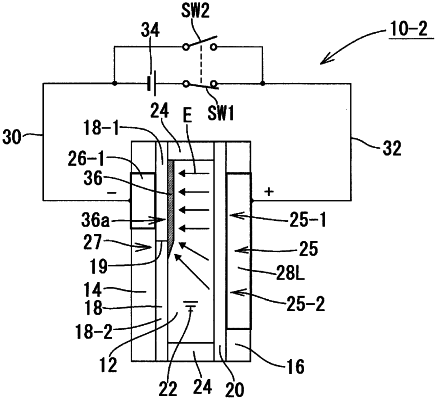| CPC G02F 1/0123 (2013.01) [G02F 1/155 (2013.01); G02F 2202/16 (2013.01)] | 11 Claims |

|
1. A light transmissive element including a light transmissive area, the light transmissive element comprising:
first and second transparent substrates disposed so as to face each other across a gap,
first and second transparent conductive films formed on facing surfaces of the first and second substrates, respectively; and
an electrolyte filled in the gap, wherein
the electrolyte contains a metal ion and is prepared so as to allow the metal ion to be reversibly deposited on a surface of the first transparent conductive film or the second transparent conductive film via electrodeposition according to a state of applied voltage between the first transparent conductive film and the second transparent conductive film,
in the light transmissive area, a first dividing line is formed in the first transparent conductive film,
the first transparent conductive film includes a first-first divisional area and a first-second divisional area in the light transmissive area, the first-first divisional area and the first-second divisional area being electrically insulated from each other by the first dividing line,
in the light transmissive area, the second transparent conductive film includes a continuous area with no dividing line,
the light transmissive element includes a first-first metal electrode and a second metal electrode,
the first-first metal electrode is connected to the first-first divisional area and is not connected to the first-second divisional area,
the second metal electrode is connected to the second transparent conductive film, and
the second metal electrode is connected to the second transparent conductive film at a position where an area, defined by straight lines connecting respective ends of the first-first metal electrode and the second metal electrode with regard to a surface direction of the light transmissive element, is in both the first-first divisional area and the first-second divisional area and not in at least a portion of the first-second divisional area.
|